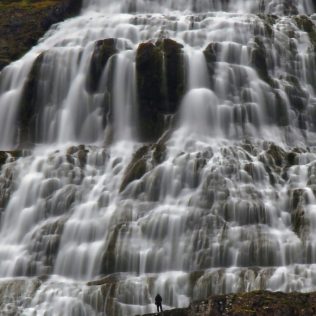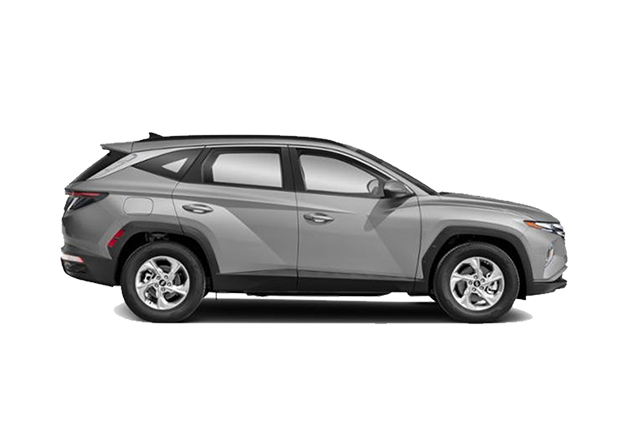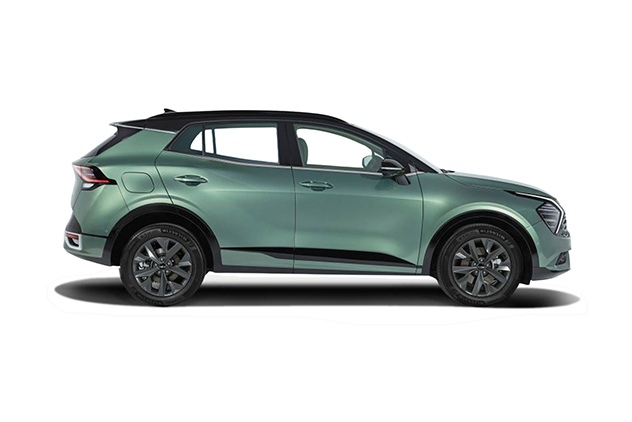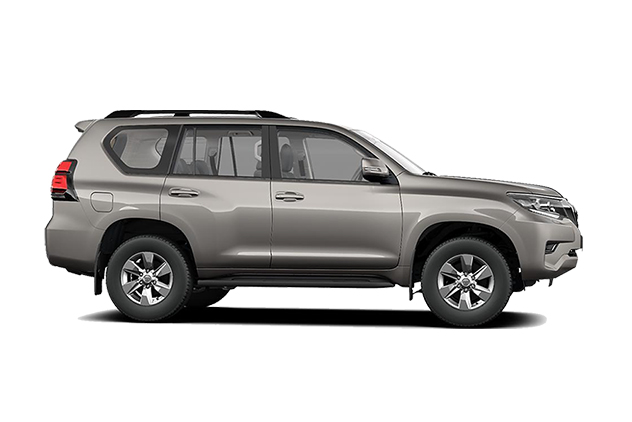If you ask local Icelanders, they’ll tell you that the Westfjords in Iceland is the ountry’s most magical and least explored region. The Westfjord Iceland is a rugged, remote, and breathtaking corner of the country that only about 10% of tourists ever see. Here, the mountains plunge into deep glacier-carved fjords, puffins nest in towering cliffs, and small fishing villages carry centuries of tradition.
For adventurous travelers, the Westfjords are a dream. You will follow winding coastal roads that reveal a new fjord at every turn, cross mountain passes with views to the horizon, and discover attractions most never see, from the bridal-veil cascades of Dynjandi to the wild cliffs of Látrabjarg. Wildlife thrives here, from arctic foxes in Hornstrandir to whales in Ísafjarðardjúp.
Having your own rental vehicle is essential. Public transport is minimal, distances are long, and the best stops are often far from bus routes. This guide will help you plan the perfect Westfjords self-drive adventure, including when to go, how to get there, the best rental cars, must-see attractions and more.
- Related Links: Driving in Iceland; Rental Cars from Hertz Iceland
Table of Contents
- Where is Westfjords Iceland?
- Iceland Westfjords Map
- How to Get to the Westfjords
- What are the Westfjords?
- What to do in the Westfjords
- Wildlife in the Westfjords
- Villages and Towns
- Best Time to Visit
- Westfjords Accommodation Options
- Best Rental Car Options
- Frequently Asked Questions
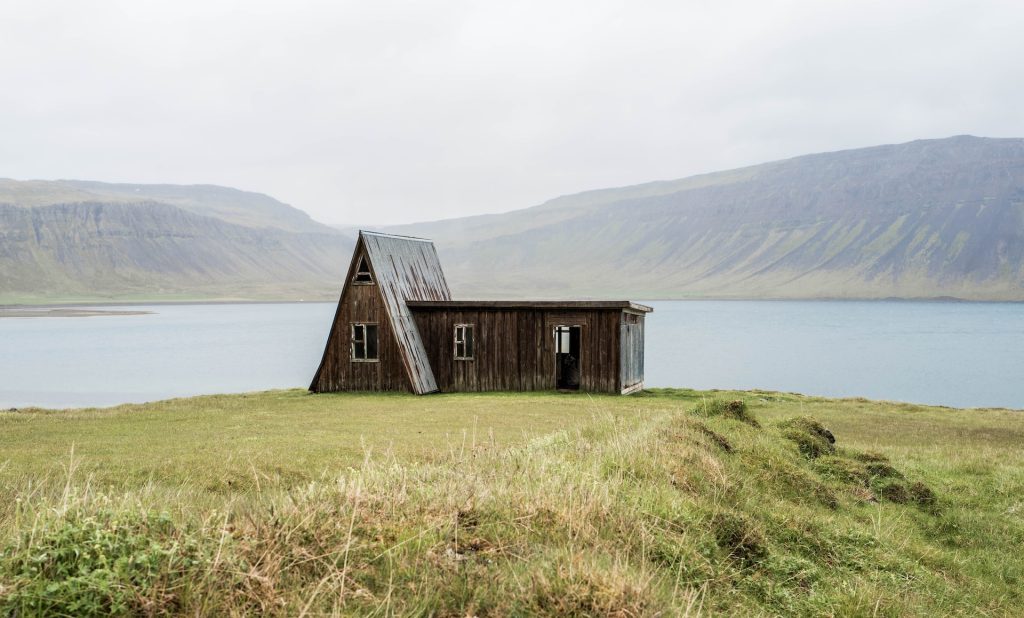
Where Are the Westfjords in Iceland?
The Westfjords make up one of Iceland’s eight regions, tucked into the far northwest of the country. Shaped by the last Ice Age, the landscape here is dominated by more than 20 large fjords and hundreds of smaller coves. The area covers about 22,000 square kilometers but is home to fewer than 7,000 people, which is one of the lowest population densities in Europe.
Its isolation is part of the charm. The Westfjords are connected to the rest of Iceland by a narrow 7-kilometer strip of land, which helps explain why so few travelers venture here. Those who do are rewarded with a raw, untouched wilderness, rich in both natural and cultural heritage. Visitors should also be aware that the remoteness brings challenges: mobile phone coverage can be weak in some valleys and along mountain roads, and many routes, especially over the passes, are gravel rather than paved. Careful driving and a reliable 4×4 are essential for exploring safely and comfortably.
Iceland Westfjords Map
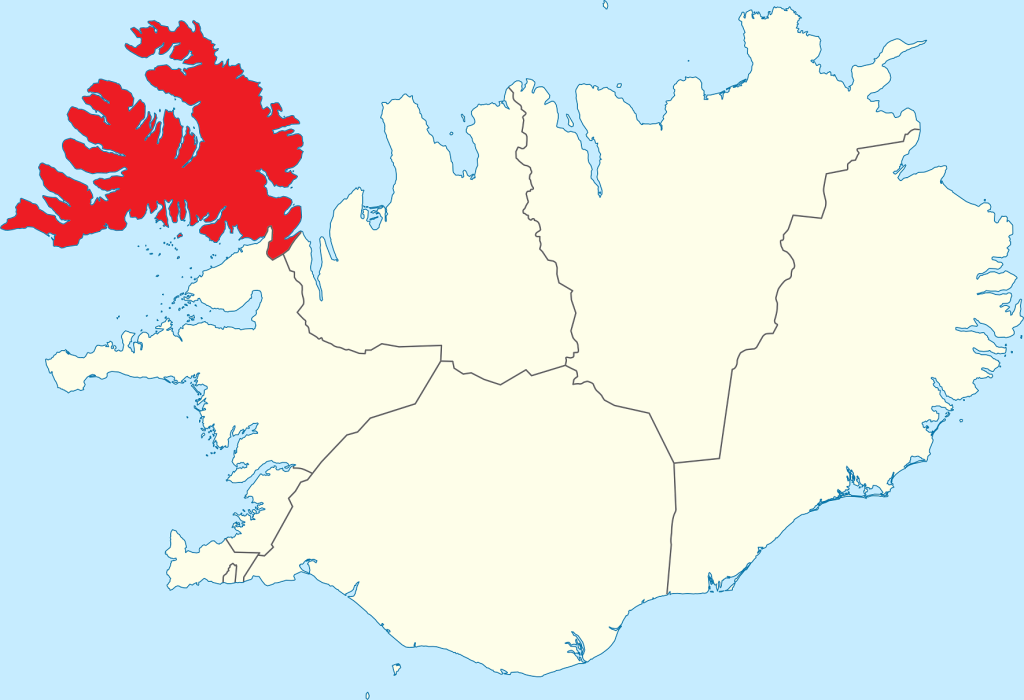
How to Get to the Westfjords Iceland
To fully experience the Westfjords, renting a car is the best (and pretty much the only) way to travel. Having a vehicle allows you to explore remote and off-the-beaten-path locations at your own pace, and there isn’t really any other option for transport into the Westfjords. From Reykjavík, you have two main options for reaching the Westfjords, each offering a very different travel experience.
Via Snæfellsnes Peninsula and Ferry – Drive north to Stykkishólmur on the Snæfellsnes Peninsula (about three hours without stops), then take the ferry across Breiðafjörður to Brjánslækur in the southern Westfjords. The crossing takes roughly two and a half hours and is one of the most scenic introductions to the region, passing small islands and seabird colonies along the way. This route drops you close to Rauðasandur Beach, Patreksfjörður, and Látrabjarg cliffs.
Via Ring Road and Búðardalur – Follow the Iceland Ring Road north through Borgarnes and turn toward Búðardalur to enter the southern fjords. This is the most direct all-land route, taking about five to six hours to reach the Westfjords’ southern edge and seven to nine hours to get to Ísafjörður. The drive winds along coastal roads and over mountain passes, revealing a new fjord around every bend. That said, to give your self the time to fully explore the region’s highlights you’ll want a minimum of 7 days. And if you plan to combine the Westfjords with the Ring Road itinerary or Iceland Golden Circle, you should allocate at least 12 days to ensure you have enough time for driving, sightseeing, and downtime.
Whichever route you choose, plan fuel stops carefully. Gas stations are few and far between once you leave the main Ring Road, so it’s best to top up your tank whenever you have the chance.
What are the Westfjords Iceland?
The Westfjords’ defining feature is, of course, its fjords, which are deep, narrow inlets carved by glaciers thousands of years ago. Each fjord has its own character:
- Ísafjarðardjúp: The largest fjord system, dotted with tiny islands and rich in birdlife.
- Arnarfjörður: Known for legends of sea monsters and the spectacular Dynjandi waterfall.
- Patreksfjörður: A working fishing hub with easy access to Látrabjarg cliffs and Rauðasandur beach.
Driving here means following winding coastal roads that hug the water’s edge before climbing over dramatic mountain passes. The scenery changes constantly. One moment you’re watching seals bask on the rocks, the next you’re cresting a ridge to see an entirely new fjord open up below you.
What to do in the Westfjords Iceland
There are endless things to see within the vast landscape of Westfjords, but here are a few highlights that you don’t want to miss:
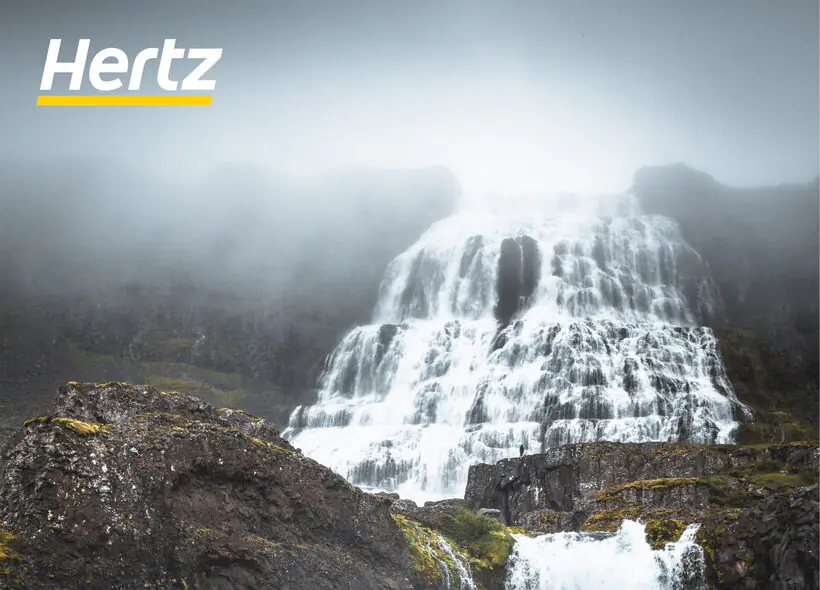
Dynjandi Waterfall
While you’re likely to encounter many different waterfalls in Iceland, the most majestic of them all is Dynjandi Waterfall. This Icelandic waterfall deserves special recognition for its series of cascades, gracefully plunging down the mountainside.
The sight of water gushing down in tiers, resembling a bridal veil, has earned Dynjandi the nickname “Jewel of the Westfjords.” To fully appreciate the waterfall, visitors can hike to the top, where they can take in a panoramic view of the surrounding fjords and mountains. This vantage point offers a truly unforgettable experience to see the landscape of Iceland in a way that most tourists don’t get the opportunity to.
Hornstrandir Nature Reserve
The Hornstrandir Nature Reserve is the most remote part of the westfjords, an absolute paradise for travelers looking for an untouched wilderness adventure. This area is only accessible by ferry or private boat from Ísafjörður, and there are no roads or shops in the area. Hiking in Iceland is the only way to explore this nature reserve, with trails connecting the harbors, birds nesting cliffs, and some of the farming villages, but there are no permanent settlements within the reserve.
As you make your way through the trails, make sure to keep an eye out for arctic foxes, eagles, and seabirds since this is one of the best places to see them. Also, be sure to check out Hornvik Beach, Graenahlid, and Hornbjarg Cliff.
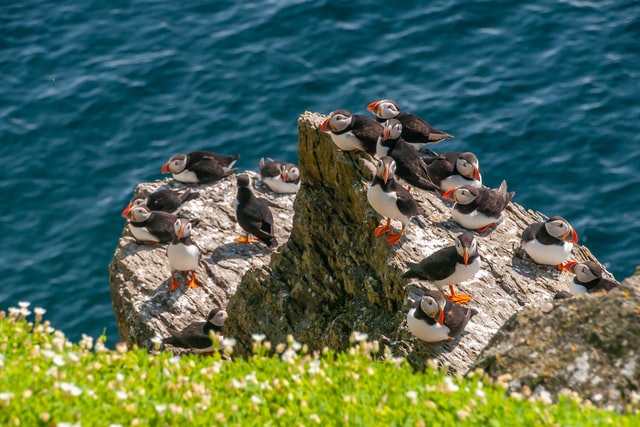
Látrabjarg Cliff
Látrabjarg Cliff is a towering cliff on the most western point of Iceland. This dramatic cliff not only provides incredible ocean views but is also one of the most popular nesting sites for Atlantic puffins! Birdwatchers and photographers flock to Látrabjarg to witness these iconic and cute seabirds in their natural habitat. Besides puffins, you can also see razorbills, guillemots, and other seabirds nesting and soaring above the coast.
At its highest point, Látrabjarg cliff stretches 441 meters (1,447 ft) high, making it the largest sea cliff in Iceland. It’s also an amazing spot to catch a glimpse of northern lights, provided you’re there during the season from September to March. But the best time to see them from Látrabjarg is during the fall (September/ October), as, during the winter, the roads to the cliff are often snow-covered and inaccessible.
Bolafjall Viewpoint
Above Bolungarvík sits Bolafjall, a windswept summit road that leads to a glass viewing platform hanging over dramatic cliffs. On a clear day you can see the entire outer coast of the Westfjords and the broken maze of headlands beyond. The road is steep and seasonal, and conditions can close it outside summer. When it is open, go slowly, keep right around blind corners, and be prepared for sudden fog banks that roll in from the sea. The payoff is one of the most expansive views in Iceland.
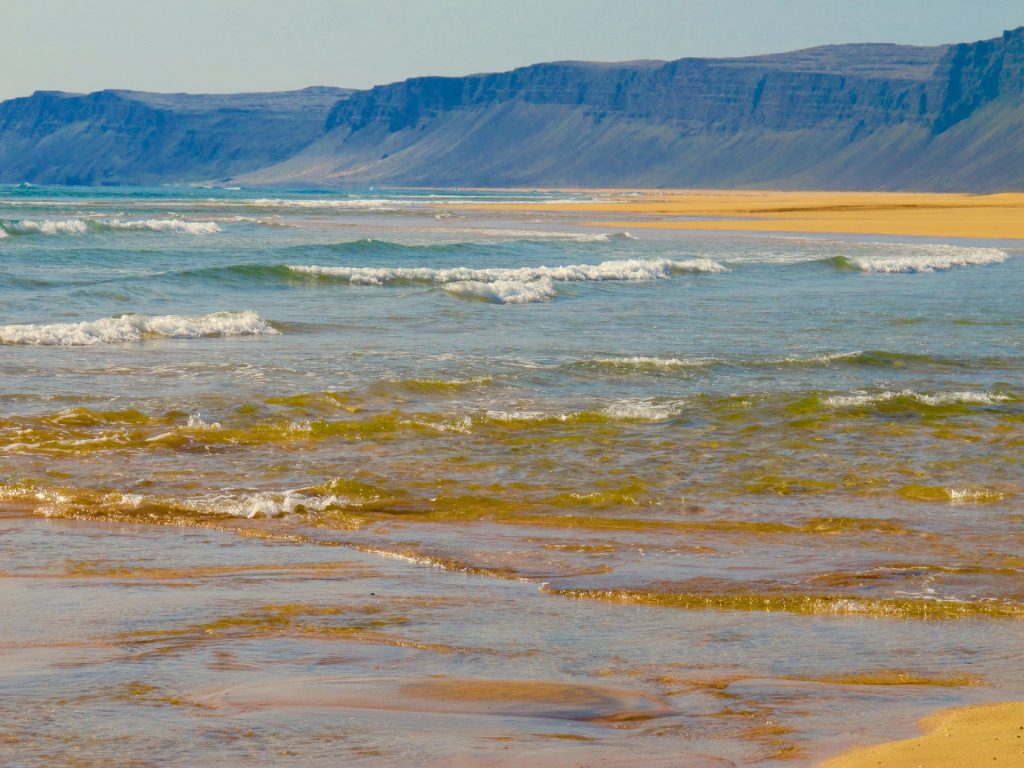
Rauðasandur Beach
Tucked away in the Westfjords is Rauðasandur Beach, also called Red Sands beach. What sets this beach apart from others is, you guessed it, its striking red and golden sand, which is very different from the black sand that is associated with Iceland’s other beaches.
The secluded beach stretches for 10 kilometers, and coastal walks and hikes allow you to connect with nature and explore nearby attractions, and you’ll likely have most of the beach to yourself because of its remote location. The color of the sand contrasting against the cliffs makes it a fantastic place for photographers looking to capture the powerful Atlantic Ocean and the beauty of the Icelandic cliffs. Photographers should plan for sunrise or late‑day glow when the tones in the sand are richest.
Valagil Canyon
Near Súðavík, a short walk leads into Valagil, a narrow green canyon with a high, ribboning waterfall at its head. It is ideal on a day when you want a leg stretch without a long hike. The path runs along a stream and the canyon walls feel close, which makes Valagil a good complement to the big landscapes you have elsewhere on the route. Keep an eye out for birdlife in the cliffs and bring a light rain layer because spray can drift if the wind shifts.
Djúpavík and the Old Herring Factory
The village of Djúpavík sits on a quiet inlet with a hulking, photogenic concrete herring factory that once employed hundreds. Today you can tour the site, learn about the boom and bust of the herring era, and experience the special acoustics inside. The drive in is part of the charm, with a succession of coastal bends and frequent photo stops. Many travelers pair Djúpavík with a slow afternoon at a nearby hot pool or a shoreline seal watch.
Whale Watching in Ísafjarðardjúp
The broad fjord complex of Ísafjarðardjúp is one of the best places in Iceland to see humpbacks in summer. Tours run from Ísafjörður and nearby harbors, typically two to three hours long. On a calm day the boat feels like it is gliding across a mirror. Keep your camera ready for flukes and tail slaps, and look up now and then for seabirds drafting the wind above the ridgelines. If your schedule allows, book early in your stay so you have a buffer day in case conditions prompt a reschedule.
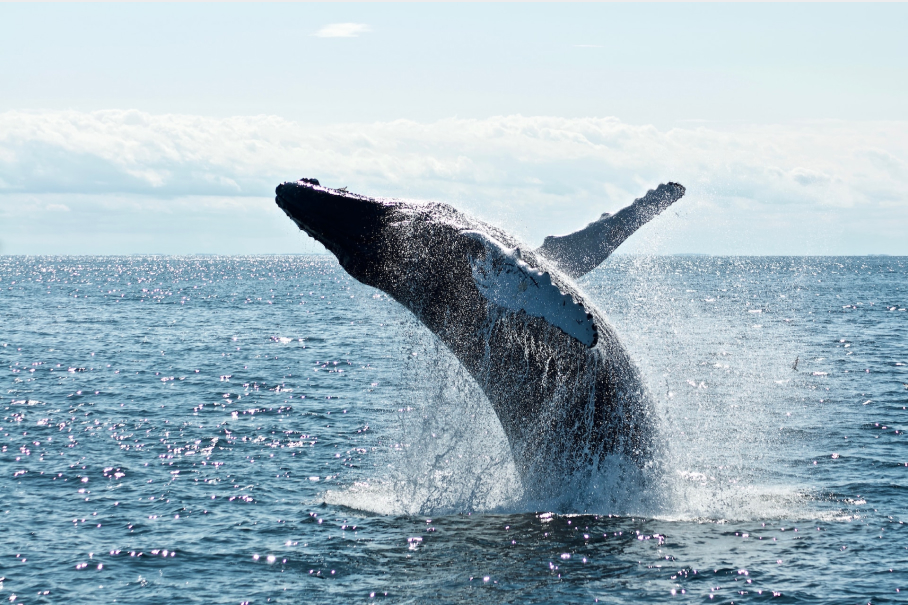
Wildlife in the Westfjords Iceland
The Westfjords are a paradise for nature lovers and wildlife photographers. Some of Iceland’s best wildlife encounters happen here:
- Puffins, razorbills, and guillemots at Látrabjarg cliffs (May to August).
- Seals lounging at Hvítanes and Reykhólar.
- Arctic foxes in Hornstrandir Nature Reserve. This is Iceland’s only native mammal.
- Whales and dolphins in Ísafjarðardjúp, especially humpbacks and minke whales in summer.
- Eider ducks in coastal lagoons.
Because the Westfjords are so sparsely populated, wildlife is less disturbed here than in other parts of Iceland, making sightings more likely.
Villages and Towns in Westfjords
For a true representation of how local Icelanders live, you need to visit the charming Iceland towns and villages in the Westfjords. Each one has its own unique character and way of life. Ísafjörður, the largest town, has colorful streets, cultural attractions, and outdoor adventures like kayaking and whale watching.
Bildudalur is a tranquil fishing village with harbor views and the Sea Monsters Museum. Holmavik is known for its witchcraft history, featuring the Museum of Icelandic Sorcery and Witchcraft, traditional turf houses, and hiking and birdwatching. These settlements provide a glimpse into the local way of life and the rich cultural heritage of the Westfjords. If you are visiting the villages, don’t forget to visit a local Iceland hot spring or swimming pool.

Best Time to Visit the Westfjords Iceland
Summer (Late May to Early September)
Summer in Iceland is the best time to visit the Westfjords. Roads that are snowbound in winter open up, ferry routes resume, and villages come to life. Daylight stretches to 20+ hours in June and July, giving you more time for hiking, wildlife spotting, and long scenic drives. This is also puffin season at Látrabjarg and the best time for whale watching in Ísafjarðardjúp.
Winter (October to April)
Winter in Iceland is beautiful but challenging, and even more so in the Westfjords. Snow blankets the mountains, and storms can makes some roads completely impassable. Many smaller villages are cut off for days at a time. You’ll find many Iceland F-roads here, which are unpaved roads that often feature river crossings, and by law, you must drive a 4X4 vehicle when driving these routes. Unless you’re experienced in Icelandic winter driving, it’s better to visit in summer. That said, winter is magical for those who are prepared. You’ll have the opportunity to see the northern lights in Iceland over snow-covered fjords and the kind of stillness you’ll rarely find elsewhere.
Westfjords Accommodation Options
When it comes to accommodations in the Westfjords, you have several options to choose from. Hotels, hostels, guesthouses, and campsites are all available, catering to various preferences and budgets. However, due to the remote nature of the region and limited availability, we recommend always booking your accommodations well in advance, especially during the peak summer season.
Here are a few recommended accommodations in the Westfjords:
- Hotel Ísafjörður: Located in the heart of Ísafjörður, this hotel offers comfortable rooms with modern amenities. It provides easy access to nearby attractions, restaurants, and shops.
- Hótel Laugarhóll: Situated in a picturesque valley, this guesthouse offers a tranquil and relaxing atmosphere. It features cozy rooms, a restaurant serving local cuisine, and access to nearby hiking trails.
- HI Hostels: This eco-friendly and budget-friendly accommodation chain features two locations in the Westfjords, including Korpudalur and Broddanes. Korpudalur is a former farmhouse sitting in a sheltered valey just 35 minutes from Dynjandi waterfall and close to Ísafjörður. Broddanes was once a rural school and is located on a scenic peninsula south of Hólmavík.
- Camping: Camping is a popular way to explore the Westfjords, whether you bring a tent or travel by campervan. There are designated campsites throughout the region, often in beautiful locations beside fjords or villages. A few good options include Flateyri Camping Ground, sheltered beneath the avalanche wall with views over Önundarfjörður; Patreksfjörður Camping Ground, close to Rauðasandur and Látrabjarg; and Þingeyri Camping Ground, which has excellent modern facilities. Near Ísafjörður, Tungudalur is a convenient choice for both tents and campervans.
Wild camping is not allowed in Iceland, so be sure to use official sites. Pairing a 4×4 campervan with these campgrounds gives you the freedom to enjoy the Westfjords at your own pace. Check out our camping in Iceland guide for more information.
Remember, regardless of the accommodation you choose, be sure to book in advance to secure your preferred dates and ensure a smooth and enjoyable trip.

Best Rental Car for the Westfjords Iceland
Do you need a 4X4 for the Westfjords? Yes. Many roads here are gravel, and some are designated F-roads where a 4WD is required by law. Even on the paved stretches, steep grades, winding passes, and variable weather make a four-wheel-drive vehicle the safer, more comfortable choice.
For a smooth and capable self-drive, Hertz Iceland offers options for every travel style:
- Toyota Land Cruiser – A powerful, comfortable SUV ideal for long drives and challenging terrain.
- Dacia Duster – A budget-friendly but reliable 4WD perfect for smaller groups or couples.
- 4×4 Campers – Great for travelers who want to combine transport and accommodation, especially in summer when campsites are open.
Whichever model you choose, booking in advance ensures you get the right vehicle for your itinerary, and the confidence to explore the Westfjords fully.
Iceland Westfjords FAQs
-
- How long does it take to drive from Reykjavík to the Westfjords?
Plan five to six hours to reach the southern fjords in fair weather, and seven to nine hours to reach Ísafjörður. Add time for scenic stops and for ferry boarding if you route via Stykkishólmur.
- How long does it take to drive from Reykjavík to the Westfjords?
-
- How long should I spend in the Westfjords?
A focused trip deserves at least five to seven days. If you are combining Westfjords in Iceland with the Ring Road or Snæfellsnes, twelve days gives you breathing room.
- How long should I spend in the Westfjords?
-
- Do you need a 4×4 for the Westfjords?
Yes for F‑roads and strongly recommended overall. A 4×4 gives you safer traction on gravel and confidence on steep grades and in changeable conditions.
- Do you need a 4×4 for the Westfjords?
-
- Can you see the northern lights in the Westfjords?
Yes. The best window is September through March on clear, dark nights away from town lights. Autumn often combines open roads with real aurora chances.
- Can you see the northern lights in the Westfjords?
-
- What is the climate in the Westfjords of Iceland?
Cool summers often in the 8 to 12°C range at sea level, brisk winds near headlands, and cold, snowy winters with frequent microclimate shifts from fjord to fjord.
- What is the climate in the Westfjords of Iceland?
-
- What is the largest town in the Westfjords?
Ísafjörður is the regional hub for services, dining, and museums.
- What is the largest town in the Westfjords?
-
- Is it worth visiting the Westfjords with kids?
Yes, if you keep driving days reasonable, plan nature stops with short walks like Valagil and Dynjandi, and choose family‑friendly bases such as Ísafjörður or Patreksfjörður.
- Is it worth visiting the Westfjords with kids?
-
- When is the best time to visit the Westfjords?
Summer for ease and access. September for quieter roads and aurora potential. Winter only for experienced travelers with flexible schedules.
- When is the best time to visit the Westfjords?
Explore the Westfjords Iceland
A self-drive trip through the Westfjords, Iceland’s remote and captivating region, is a truly unforgettable experience. From thundering waterfalls to untouched nature reserves, charming villages, and wildlife, the Westfjords is an incredible spot for the adventurous traveler. To make the most of your journey, rent a 4WD vehicle and embark on an adventure through winding scenic roads.
Take the time to explore attractions such as Dynjandi Waterfall, Hornstrandir Nature Reserve, Látrabjarg Cliff, Rauðasandur Beach, and the charming villages of the region. For better road conditions and milder weather, the summer is the best time to explore the Westfjords.
But if you’re a first-time visitor to the Westfjords, it’s advisable to be cautious and well-prepared. Check out these Iceland car rental tips and make sure to always book your rental car online and in advance with Hertz Iceland to ensure you get the perfect 4X4 vehicle for your Westfjords road trip.
